
Probe could help unlock vast web of CIA criminality and corruption spawning from theft and illegal use of spyware software used to monitor and track dissidents
During the 1970s, a former National Security Agency (NSA) staffer named Bill Hamilton, who had translated articles in the North Vietnamese press for the CIA during the Vietnam War, developed with his wife Nancy new computer software under contract by the Law Enforcement Assistance Administration (LEAA) to help law enforcement agencies collect money owed to the government by criminals and to track court cases and criminal offenders.

In March 1982, a company that the Hamiltons formed, called the Institute for Law and Social Research (INSLAW), was awarded a $10 million contract to install the software known as Prosecutors Management Information System (PROMIS) in 94 Department of Justice offices.
Officials in the Justice Department working under then-Attorney General Edwin Meese, however, forced INSLAW into bankruptcy and seized INSLAW’s version of PROMIS.

It was then utilized, Hamilton believes, by banks to enable NSA and the CIA to track wire transfers of money and letters of credit, and by the CIA to track dissidents and alleged troublemakers in the U.S. in an emergency preparedness program commissioned by the Federal Emergency Management Agency (FEMA).
Iran-Contra felon Oliver North allegedly came to possess a computer link to PROMIS with a national security aide in the White House. By using PROMIS, North could have drawn up lists of anyone ever arrested for political protest or who had ever refused to pay taxes or otherwise come under government review.[1]


One of the most senior CIA staffers who specialized in clandestine propaganda operations, Walter Raymond, Jr., also used the PROMIS-derivative Main Core intelligence database system in his work in the Reagan White House, which included amassing dossiers on political figures that could be used for blackmail purposes.[2]
Hamilton believed that then-CIA Director William Casey was the driving force for most of the unauthorized, copyright-infringing uses of INSLAW’s PROMIS, which was carried out by the CIA’s Division-D.[3]


Retired U.S. Air Force Major General Nathan J. Lindsay, while employed in the CIA’s Division D, oversaw a CIA contractor-operated PROMIS Packaging Facility in Herndon, Virginia, which allegedly supplied unauthorized, copyright-infringing derivatives of INSLAW’s PROMIS for all U.S. intelligence and Israeli intelligence PROMIS-related collection and dissemination projects.
The software was so valuable because it enabled collection of a vast amount of personal data on Americans, including NSA intercepts of bank and credit card transactions and the results of surveillance efforts by the FBI, CIA and other agencies.[4]
Throughout the mid to late 1980s, the PROMIS software was sold to intelligence services worldwide by Dr. Earl W. Brian, a veteran of the Phoenix Program in Vietnam and former California health secretary with close connections to Edwin Meese.

His holding company, Biotech Capital Corporation, had 40 computer system contracts with U.S. intelligence agencies, and tried to pressure Hamilton into selling INSLAW.
According to various sources, Brian was involved in the “October Surprise” where the Reagan campaign paid the Iranians to delay the release of American hostages during the 1980 election to make incumbent Jimmy Carter look bad and help Reagan win the White House.
CIA whistleblower Michael Riconosciuto claimed that PROMIS software was Brian’s payment for participation in the “October Surprise” and other covert operations.[5]
Riconosciuto told Unsolved Mysteries that Brian and other men involved in the PROMIS theft participated in the Iran-Contra affair and covert operations in Central America in the Middle East that involved illegal drugs and arms smuggling.
Earl Brian and Peter Videnieks of the Justice Department supervised a joint venture of the Cabazon Indian tribe in Indio, California, and Wackenhut, the nation’s third largest private security firm, of which Riconosciuto was the research director, to copy and modify the PROMIS software for spying purposes.[6]
Part of Riconosciuto’s job in the modification of the software was to create a “back door access” for spying into the files of its users which included Great Britain, South Korea, Japan, Jordan, Canada, Israel, Egypt, Canada and Iraq.[7]

Brian’s customers for the revamped spy software included the Israelis, who used PROMIS to track troublesome Palestinians, according to Rafi Eitan, long-time deputy director of Mossad’s covert operations, who gushed: “We can use that program [PROMIS] to stamp out terrorism by keeping track of everyone. But not only that, we can find out what our enemies know too.”[8]
Eitan admitted to British journalist Gordon Thomas that he had collaborated with CIA officials in selling more than half a billion dollars worth of INSLAW’s PROMIS to foreign intelligence and law enforcement agencies as part of a joint covert operation with the U.S. to steal the intelligence secrets of foreign governments.[9]

“Sinister Conspiracy Even Greater Than Watergate”
After INSLAW was stolen from him, Hamilton engaged in a decades-long legal battle with the Department of Justice, having lost out on billions of dollars in government contracts. His attorney, Elliot Richardson, Nixon’s former attorney general, said that there was circumstantial evidence of a “sinister conspiracy” that was “even greater than Watergate.”
In September 1987, U.S. Bankruptcy Judge George F. Bason, Jr., ruled in favor of INSLAW and awarded Hamilton $6.8 million, saying that Justice Department officials “took, converted and stole” PROMIS through “trickery, fraud and deceit.”[10]
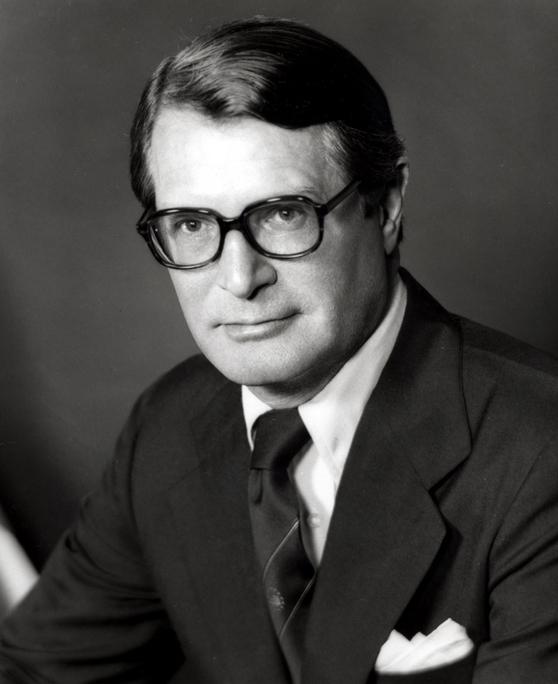


Bason’s ruling was affirmed in November 1989 by U.S. district Judge William B. Bryant Jr., who said that there was “convincing, perhaps compelling support for the findings set forth by the bankruptcy court,” though it was overturned by the U.S. Court of Appeals on jurisdictional questions by a three-judge panel headed by James Buckley, the brother of William F. Buckley, the famous conservative pundit who had worked for the CIA.

James Buckley was a Reagan appointee who had carried out covert economic warfare on the Soviet Union while Reagan’s Under-Secretary of State. The operation he presided over benefited from the use of PROMIS derivative software that tracked wire transfers from the Soviet Union to companies in Europe through which the Soviet Union was illicitly purchasing such high technology products as integrated circuits engineered for use in weapons systems.[11]
Right after his ruling in favor of INSLAW, Judge Bason was denied reappointment to the bench. His position was filled by Martin S. Teel, a Department of Justice lawyer who represented the Internal Revenue Service (IRS) in its audit of INSLAW.
Biden In On Coverup
Senator Joe Biden, who had brought INSLAW’s PROMIS software into the U.S. Department of Justice for use in its U.S. Attorneys Offices, was a key figure helping to protect corrupt officials involved in the INSLAW theft as head of the Senate Judiciary Committee.
This fits a larger pattern in Biden’s career; CAM previously reported on how Biden helped cover up for CIA criminality as a member of the Senate Select Committee on Intelligence in the early 1980s.
In March, 1989, INSLAW’s lawyer, Elliot Richardson wrote a letter to Biden asking him to apprise the Attorney General Richard Thornburgh of the fact that his committee’s chief investigator, Ronald LeGrand, had received serious allegations of malfeasance within the Department of Justice from an informant he deemed to be credible, and that he should ask for Thornburgh’s assurance that reprisals would not be permitted against anyone in the Department of Justice who came forward with truthful testimony.[12]
Biden responded in cowardly fashion by asking Ronald LeGand to write a short letter to Richardson in which he basically refused the request, invoking the separation of powers doctrine and saying that the Senate Judiciary committee would not intervene in any pending litigation.[13]


Richardson responded to Biden saying that he was astonished by the LeGrand letter as he never requested that the Senate Judiciary committee interfere in any pending litigation, and that the separation of powers doctrine was irrelevant to what he was requesting. Further he was unaware of any “constraints on committee investigative information,” which LeGrand specified, particularly since the committee had not to that point carried out any in-depth investigation.[14]
LeGrand later told Bill Hamilton that he had never written nor signed the letter, but that it had been drafted by a top aide to Chairman Biden who then forged LeGrand’s signature.[15]
The Brooks Committee and Its Detractors
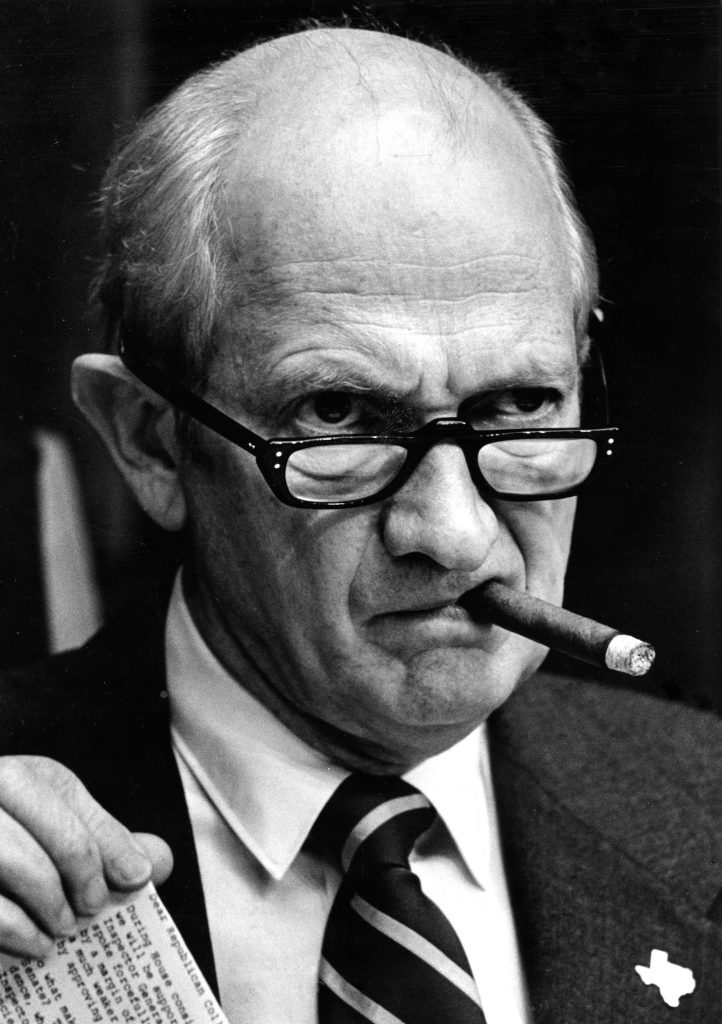
The chairman of the House Judiciary Committee, Jack Brooks (D-TX) showed much greater spine then the current U.S. President. He began an investigation in April, 1990, which issued a report dated September 10, 1992 that validated Judge Bason’s earlier ruling. The report specified that:
“It is clear that high level Department of Justice officials deliberately ignored INSLAW’s proprietary rights in the enhanced version of PROMIS and misappropriated this software for use at locations not covered under the contract with the company. Justice then proceeded to challenge INSLAW’s claims in court even though it knew that these claims were valid and that the Department would most likely lose in court on this issue.”[16]
Demanding that the Department of Justice pay INSLAW millions of dollars that it was owed, the committee found that, “Attorney Generals [Edwin] Meese and [Richard] Thornburgh blocked or restricted congressional inquiries into the matter, ignored the findings of two courts and refused to ask for the appointment of an independent counsel. These actions were taken in the face of a growing body of evidence that serious wrongdoing had occurred which reached to the highest levels of the Department.”[17]

Key witnesses were intimidated in order to dissuade them from testifying before Brooks’s committee and Michael Riconosciuto was framed, according to his telling, on phony drug charges after he testified.
That Brooks had struck a raw nerve in the intelligence community was further evident by the fact that, when he asked a question about INSLAW during the Iran-Contra hearings, the committee immediately went into a closed secret executive conference.[18]
When Brooks’s committee subpoenaed Richard Thornburgh to produce several hundred pages of INSLAW affair documents that had mysteriously disappeared from the files of Sandra Spooner, Department of Justice’s Counsel on INSLAW’s litigation, Thornburgh reneged on his commitment and the documents were never produced to the Committee by the Department of Justice.[19]
Hamilton believes that the documents in question related to the use of the modified Main Core version of PROMIS for political blackmail operations of the White House’s National Security Council.[20]
After the House Judiciary Committee released its report, Brooks promoted a bill introduced by Charlie Rose (D-NC) that would have allowed INSLAW to challenge the Justice Department in open court, though this died on a procedural matter after Edwin Meese and his successor, Janet Reno, made phone calls urging the bill’s defeat.


Reno released her own report clearing her department and recommending the whole matter be laid to rest based on the findings of an earlier investigation conducted by federal Judge Nicolas Bua, which concluded that the INSLAW claims were without merit and that the House investigators who had spent two years on the case had misunderstood much of what they discovered.[21]
Bua had been appointed as a Special Counsel by then-Attorney General William Barr, who had a CIA background, on November 7, 1991, in anticipation of the Brooks investigation report.[22]
Subsequently, Barr ignored the request of the 21 Democrats on the House Judiciary committee to carry out an independent counsel to investigate the government’s malfeasance in the INSLAW case. This after the committee had confirmed the judicial findings of the two lower federal courts regarding the Justice Department’s theft of PROMIS, and in light of the belief of a conspiracy by friends of former Attorney General Edwin Meese to sell and distribute stolen copies of PROMIS domestically and internationally for their personal financial gain and in support of the intelligence and foreign policy objectives of the U.S.[23]
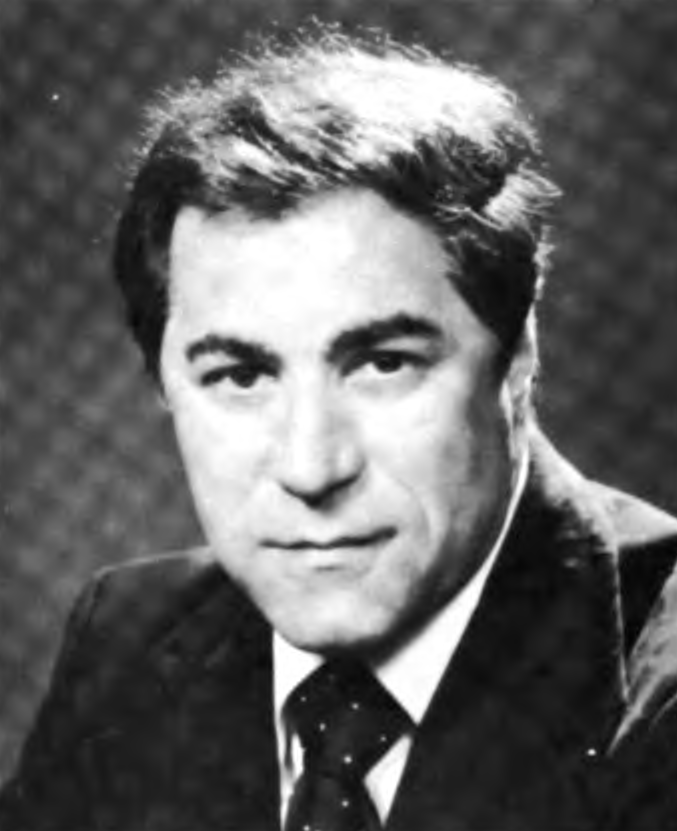

In 1995, Brooks lost his seat in Congress after his district was redrawn; and since that time, the INSLAW case has not been taken up by the federal government.
Will a New House Committee Pick Up Unfinished Business?
In an exclusive interview with CAM, Bill Hamilton expressed hope that the new House Judiciary Select Subcommittee on the Weaponization of the Federal Government Against Americans, or “new Church committee” as it is billing itself, would be allowed to pursue the unfinished business of the September 1992 House Judiciary Committee INSLAW affair investigation headed by Jack Brooks, whom Hamilton said was a “tenacious investigator.”
According to Hamilton, the U.S. government “must have justified its decision not to hold officials to account for the malfeasance against INSLAW based on the risk of exposure of intelligence secrets, which, in my opinion, almost assures similar malfeasance will continue to take place in the future. The INSLAW case needs to become an example for why that course of action cannot be tolerated.”
Hamilton told CAM that he has “no way of knowing [of course] whether the new House Judiciary Select Subcommittee will prove to be competent and properly staffed” and whether, even if it is, it “might be allowed to pursue the unfinished business of the September 1992 House Judiciary Committee INSLAW Affair investigation.”

The odds are not good because of the partisan nature of the new committee, which appears intent on examining FBI abuses against conservative groups and is unlikely to want to dig up old skeletons in the closet of the Republican Reagan administration.
Furthermore, few if any members of Congress appear to have the courage to want to confront the “deep state.” There was very little pushback when President Biden refused to declassify 5,000 critical documents pertaining to the Kennedy administration that would likely reveal Lee Harvey Oswald’s connections to the CIA, so why would the INSLAW case be any different?
Rosetta Stone of CIA Criminality
The INSLAW case is in a way like the Rosetta Stone of CIA criminality and corruption in the late 20th century. A thorough investigation of it would likely help expose CIA and high-level government officials’ involvement in an array of criminal activity, including in the Iran-Contra affair, BCCI banking scandal, and October Surprise, along with illegal surveillance, political blackmail, money laundering, arms smuggling, drug trafficking and murder.

Hamilton claims that, in the early 2000s, CIA Director George Tenet told him through a mutual friend that he was prepared to settle with INSLAW when he heard about the theft, but was then advised by the CIA’s General Counsel not to become involved in the INSLAW affair.
Former CIA Deputy Director Daniel Murphy (1976-1977) told Hamilton he imagined that an aide to Tenet figuratively tugged on his sleeve and said something like the following: “Boss, you may have lost sight of something to which the INSLAW Affair is connected.”

Murphy said further that it was his “hunch” that there was still another intelligence use of the PROMIS software that INSLAW had not yet discovered; and that the additional PROMIS intelligence application involves something “so seriously wrong that money alone c[ould] not cure the problem.”[24]
Hamilton believes that Murphy specifically was alluding to the Main Core political blackmail version of PROMIS, ostensibly created by FEMA as a contingency resource for the Defense Intelligence Agency (DIA) and the U.S. Army in the event of a national catastrophe, causing the imposition of martial law, and the need to round up and detain Americans whose loyalties to the U.S. had come under suspicion by the government.[25]
Evidence exists that the PROMIS-derivative Main Core database system being administered by FEMA under the Continuity of Government (COG) Program at a FEMA computer center in Northern Virginia, was being accessed remotely by select members of the White House National Security Council staff, assisted by a covert unit from the DIA and U.S. Army telecommunications specialists in a four-story brick townhouse near the White House, to retrieve Main Core intelligence data to support political blackmail operations against such targets as members of Congress and their staffs.
Danny Casolaro and The Octopus
The key man who appeared on the verge of unlocking the criminal conspiracy involving the theft of PROMIS and its use for nefarious purposes by corrupt government officials was found dead on August 9, 1991, in a Sheraton Inn bathroom in Martinsburg, West Virginia.

Special Counsel Nicolas Bua concluded that investigative journalist Danny Casolaro had committed suicide, but Casolaro’s family made clear that he was not suicidal and that the alleged suicide note had been forged.[26]
Oddly, Casolaro’s family was only informed about his death after two days.
The source of death, 12 razor blade cuts to Casolaro’s arm, including one that severed a tendon, was too brutal for a suicide, particularly by a man squeamish about blood.
There was a bruise on Casolaro’s arm and head that were never accounted for and signs that an assailant had tried to asphyxiate him.
Three of Casolaro’s fingernails were missing, and a housekeeper saw two bloody towels, which indicated that blood had been cleaned up by someone other than him.
Additionally, INSLAW had confidential sources tell them that Casolaro had been found with ethyl alcohol absolut in his system that had been injected into his spine to “deaden the nerves below his head.”
In the days before his death, Casolaro had received death threats and been warned by intelligence professionals that he was in over his head and that his life was in danger. Strangers in military uniforms appeared at his funeral. Casolaro had told his brother, “if anything happens to me, don’t believe it was an accident.”[27]

Significantly, a briefcase filled with incriminating, highly classified documents delivered to Casolaro in Martinsburg the day before his death by William Turner, a former Hughes Aircraft employee, went missing.
Turner stated the documents included “computer printouts and other documents [Casolaro had] received from un-named sources and from Alan Standorf [an NSA employee who was found beaten to death in the back seat of his car in a parking lot at Washington National Airport in January 1991] and documents relating to the sale of modified PROMIS software…to Canada, Australia and Israel.”
Turner claims to have been present at meetings between Casolaro and Standorf, including meetings where Casolaro made photocopies of documents he was obtaining from Turner so the documents could be promptly returned to the government files from which they were being copied.

In his affidavit, Turner claimed that Casolaro intended to trade copies of the aforementioned documents for other documents later that evening at a final follow-up meeting with sources on his investigation of the INSLAW Affair, including Peter Videnieks and Special Forces Intelligence Major Joseph Cuellar. Cuellar, according to what Casolaro told INSLAW, had arranged that meeting between Casolaro and Videnieks in Martinsburg.
Hamilton said that “my intelligence source claimed that Danny was murdered by…Joseph Cuellar in the course of a covert intelligence operation. The objective of the operation was to recover every copy of computer printouts from a Defense Intelligence Agency PROMIS-based domestic surveillance database system called Main Core, acquired through the assistance of…Alan Standorf.”
Hamilton believes it is very likely that Cuellar, a Gulf War I veteran working covertly for the DIA who had a “chance encounter” with Casolaro at a bar shortly before Casolaro’s death, was the man an unnamed Sheraton Inn maid told the Martinsburg police she saw leaving Casolaro’s room the morning of his death on August 10. The maid’s description to the Martinsburg police fit Cuellar’s very closely, down to the expensive sports clothes the maid described.
The mystery man was mentioned in a meeting between Bill and Nancy Hamilton and INSLAW’s attorneys with Assistant U.S. Attorney Steven Zipperstein and FBI Special Agent Scott Erskine in March 1994.
According to Hamilton, a key motive for Casolaro’s death was to prevent his planned visit to a “sensitive” facility in Washington, D.C., located near the White House in a four-story brick townhouse at #730 Jackson Place, NW, used by a covert unit from the DIA and the U.S. Army to facilitate remote access by select members of the NSC staff to the Main Core intelligence database system then being administered by FEMA at its computer center in Culpeper, Virginia.
A week before Casolaro’s death, Hamilton received a phone call from Charlie Hayes, a longtime contractor for the CIA’s Division D, which had been in charge of the CIA’s theft and dissemination of PROMIS for intelligence collection projects. Now living in Nancy, Kentucky, Hayes warned him that Casolaro was planning to visit a sensitive facility in Washington, D.C. that would get him killed and that Hamilton should convince Casolaro not to go.[28]
Casolaro had told Hamilton before his death that the sensitive facility was under the control of George K. Pender, a former senior CIA clandestine service officer then heading what Casolaro called “The Octopus,” a group of former senior U.S. and Allied intelligence operatives, who undertake sensitive assignments from U.S. intelligence, primarily for their own personal financial gain.
The spooks associated with The Octopus were all linked to the PROMIS theft and manipulated public events through involvement in the “October Surprise” and Iran-Contra affair, and were involved in the covert development of chemical and biological weapons at the Cabezon Indian reservation in California, where Contra operatives had attended weapons displays.[29]
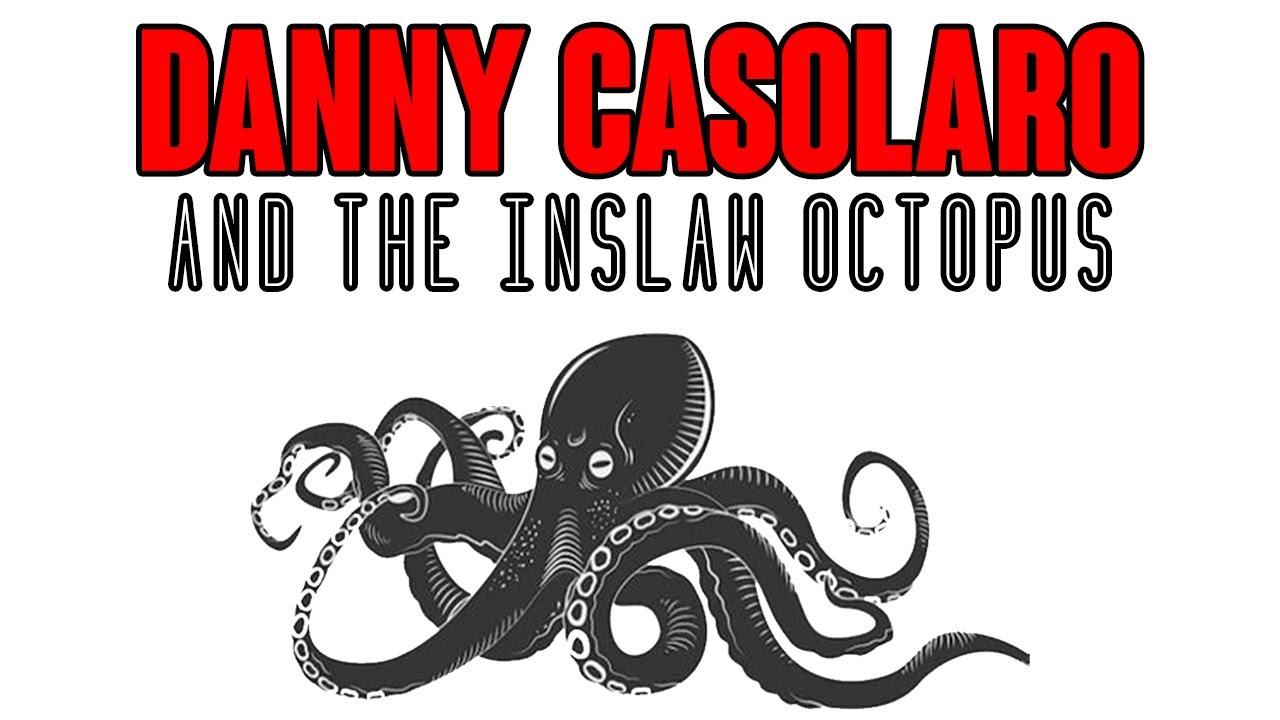
Since Casolaro’s death, more information has come to light about “The Octopus” and growing influence of organized crime on politics.[30]
If and when Congress develops the courage to revive the Brooks’s investigation, the full details would be known of a vast criminal conspiracy whose evil knows no bounds.

-
Richard L. Fricker, “Brooks vs. the Justice Dept.: The Texas Delegation’s Dean Seeks INSLAW Answers,” The Texas Observer, November 11, 1994, 8. ↑
-
Whitney Webb, One Nation Under Blackmail, Vol. 1: The sordid union between Intelligence and Organized Crime that gave rise to Jeffrey Epstein (Walterville, OR: Trine Day, 2023), 393. ↑
-
Hamilton told that the CIA’s Division D at some point was superseded by a new stand-alone U.S. intelligence agency known as the Special Collection Service, headquartered in Maryland, with its leadership alternated annually between the CIA and the NSA. ↑
-
Webb, One Nation Under Blackmail, Vol. 1, 392. Intelligence sources told Hamilton that Lockheed Aircraft actually used adapted INSLAW’s PROMIS as the cockpit software for the F-117 and later for all U.S. attack aircraft. ↑
-
Webb, One Nation Under Blackmail, Vol. 1, 391. ↑
-
Wackenhut’s Board of Directors included many former top CIA officials, including William Raborn, CIA Director under Lyndon B. Johnson. Webb, One Nation Under Blackmail, Vol. 1, 391, 398. His testimony was confirmed by Rafi Eitan, a famous Mossad spy chief. ↑
-
Kenn Thomas and Jim Keith, The Octopus: Secret Government and the Death of Danny Casolaro (Los Angeles: Feral House, 2004). Bill Hamilton came to believe that “the main role of the Cabazon/Wackenhut Joint Venture was connected to government-sanctioned drug trafficking and money laundering by organized crime groups like the Gambino Family and groups like the Contras, and that Michael Riconosciuto’s job was to help these groups access NSA’s bank surveillance version of PROMIS to launder the proceeds from the drug sales.” ↑
-
Media tycoon Robert Maxwell was a key figure marketing the PROMIS software to the Israelis until he turned up dead. Eitan was famous for having spearheaded the kidnapping of Nazi war criminal Adolf Eichmann and directed Israeli spy Jonathan Pollard who was caught trying to steal U.S. nuclear secrets. ↑
-
“Affidavit of Gordon Thomas,” November 11, 2000, provided to the author by Bill Hamilton. Hamilton has evidence that Eitan tried to kill him and his wife in a plot that was thankfully thwarted by U.S. intelligence. ↑
-
The court proceedings revealed that Thomas Stanton, head of the Justice Department’s bankruptcy trustee program, had tried to pressure one trustee, William C. White, to convert INSLAW’s reorganization proceeding into a liquidation. The Department of Justice forced the resignation of Anthony Pasciuto, Deputy Director of the Executive Office for United States Trustees when he disclosed to INSLAW the covert and unlawful plan by Stanton to push INSLAW into liquidation. ↑
-
Email correspondence with Bill Hamilton, May 12, 2023. ↑
-
Elliot L. Richardson to The Honorable Joseph R. Biden Jr., March 8, 1989, supplied to the author by Bill Hamilton. ↑
-
Ronald A. LeGrand to Mr. Elliot A. Richardson, March 20, 1989, supplied to the author by Bill Hamilton. ↑
-
Elliot L. Richardson to The Honorable Joe Biden, March 29, 1989, supplied to the author by Bill Hamilton. ↑
-
Author correspondence with Bill Hamilton, May 9, 2023. Legrand was subsequently forced out as Chief Investigator and soon hounded away from his new staff job on the Hill. ↑
-
Fricker, “Brooks vs. the Justice Dept.,” 6. ↑
-
Fricker, “Brooks vs. the Justice Dept.” The committee further reported that the evidence “clearly raises serious concerns about the possibility that a high-level conspiracy against INSLAW did exist and that great efforts have been expended by the Department to block any outside investigation into the matter.” Additionally, Brooks expressed grave concern that the Department of Justice “seemed increasingly bent on pursuing controversial theories of executive privilege and power at the expense of removing government from the subshine public scrutiny and accountability.” ↑
-
Fricker, “Brooks vs. the Justice Dept.,” 8. ↑
-
Hamilton told me that a Department of Justice Security Service officer, Garnet K. Taylor, came to see him and his wife claiming that the DOJ had fired him on trumped-up charges after he had refused an order, on the grounds that it would implicate him in felony obstruction of justice, to covertly remove the documents in question from Sandra Spooner’s DOJ litigation files. That Security Service officer was eventually reinstated with back pay. Former CIA Deputy Director Daniel Murphy said that “the available evidence made it look like an NSA operation; and that if it were an NSA operation, it would explain Thornburgh’s behavior because Thornburgh would not have needed to receive a call from the White House to know that his job was to stonewall ‘until the cows come home.’” ↑
-
Author email correspondence with William Hamilton, April 24, 2023. ↑
-
Later when Reno offered to pay a financial settlement to INSLAW, it was rejected by White House staff on “national security” grounds. The Clinton administration’s role in the coverup was not surprising: When Clinton was out of money during the 1992 presidential election campaign, he was bailed out by Worthen Bank of Little Rock whose owner, Jackson Stephens, was the largest shareholder in Systematics Inc., an NSA contractor for unauthorized copy-right infringing uses of PROMIS in the banking sector, including the alleged $20-$30 billion in off-the-books insider trading profits each year for U.S. intelligence. Some of the latter was allegedly used for off-the-books contributions to Clinton and other political officials. ↑
-
Fricker, “Brooks vs. the Justice Dept.” ↑
-
Email correspondence with Bill Hamilton, May 2, 2023. ↑
-
Hamilton said he suspects that the use to which Murphy—who died unexpectedly shortly after he spoke to Hamilton—was referring was the storing and retrieval of intelligence information useful for political blackmail operations of the White House against such targets as members of Congress and their staff members. ↑
-
Author Correspondence with Bill Hamilton, May 12, 2023. ↑
-
The alleged suicide note invoked God despite the fact that Casolaro was an atheist. The note also never explained why Casolaro would have killed himself. ↑
-
Thomas and Keith, The Octopus. ↑
-
Author correspondence with Bill Hamilton, May 12, 2023. Hayes caused the resignation of several corrupt politicians until he was thrown in prison on suspicious charges like Riconosciuto—right after he had assisted Special Prosecutor Kenneth Starr in drafting indictments against Bill and Hillary Clinton. Hayes was also dubbed on the internet as the Angel Of Death because he was the head and public representative of the Fifth Column, a group of hackers who tracked political payoffs through money-laundering channels. Hayes testified in favor of INSLAW in a a Chicago grand jury in 1992 and accused the DOJ of “lying, cheating, and stealing.” ↑
-
Thomas and Keith, The Octopus; Webb, One Nation Under Blackmail, Vol. 1, 391. ↑
-
See, for example, Whitney Webb’s two-volume series One Nation Under Blackmail and Jonathan Marshall’s book, Dark Quadrant: Organized Crime, Big Business, and the Corruption of American Democracy (Lanham, MD: Rowman & Littlefield, 2021). ↑
CovertAction Magazine is made possible by subscriptions, orders and donations from readers like you.
Blow the Whistle on U.S. Imperialism
Click the whistle and donate
When you donate to CovertAction Magazine, you are supporting investigative journalism. Your contributions go directly to supporting the development, production, editing, and dissemination of the Magazine.
CovertAction Magazine does not receive corporate or government sponsorship. Yet, we hold a steadfast commitment to providing compensation for writers, editorial and technical support. Your support helps facilitate this compensation as well as increase the caliber of this work.
Please make a donation by clicking on the donate logo above and enter the amount and your credit or debit card information.
CovertAction Institute, Inc. (CAI) is a 501(c)(3) non-profit organization and your gift is tax-deductible for federal income purposes. CAI’s tax-exempt ID number is 87-2461683.
We sincerely thank you for your support.
Disclaimer: The contents of this article are the sole responsibility of the author(s). CovertAction Institute, Inc. (CAI), including its Board of Directors (BD), Editorial Board (EB), Advisory Board (AB), staff, volunteers and its projects (including CovertAction Magazine) are not responsible for any inaccurate or incorrect statement in this article. This article also does not necessarily represent the views the BD, the EB, the AB, staff, volunteers, or any members of its projects.
Differing viewpoints: CAM publishes articles with differing viewpoints in an effort to nurture vibrant debate and thoughtful critical analysis. Feel free to comment on the articles in the comment section and/or send your letters to the Editors, which we will publish in the Letters column.
Copyrighted Material: This web site may contain copyrighted material the use of which has not always been specifically authorized by the copyright owner. As a not-for-profit charitable organization incorporated in the State of New York, we are making such material available in an effort to advance the understanding of humanity’s problems and hopefully to help find solutions for those problems. We believe this constitutes a ‘fair use’ of any such copyrighted material as provided for in section 107 of the US Copyright Law. You can read more about ‘fair use’ and US Copyright Law at the Legal Information Institute of Cornell Law School.
Republishing: CovertAction Magazine (CAM) grants permission to cross-post CAM articles on not-for-profit community internet sites as long as the source is acknowledged together with a hyperlink to the original CovertAction Magazine article. Also, kindly let us know at info@CovertActionMagazine.com. For publication of CAM articles in print or other forms including commercial internet sites, contact: info@CovertActionMagazine.com.
By using this site, you agree to these terms above.
About the Author

Jeremy Kuzmarov holds a Ph.D. in American history from Brandeis University and has taught at numerous colleges across the United States. He is regularly sought out as an expert on U.S. history and politics for radio and TV programs and co-hosts a radio show on New York Public Radio and on Progressive Radio News Network called “Uncontrolled Opposition.”
He is Managing Editor of CovertAction Magazine and is the author of six books on U.S. foreign policy, including Obama’s Unending Wars (Clarity Press, 2019), The Russians Are Coming, Again, with John Marciano (Monthly Review Press, 2018), Warmonger. How Clinton’s Malign Foreign Policy Launched the U.S. Trajectory From Bush II to Biden (Clarity Press, 2023); and with Dan Kovalik, Syria: Anatomy of Regime Change (Baraka Books, 2025).
Besides these books, Kuzmarov has published hundreds of articles and contributed to numerous edited volumes, including one in the prestigious Oxford History of Counterinsurgency .
He can be reached at jkuzmarov2@gmail.com and found on substack here.




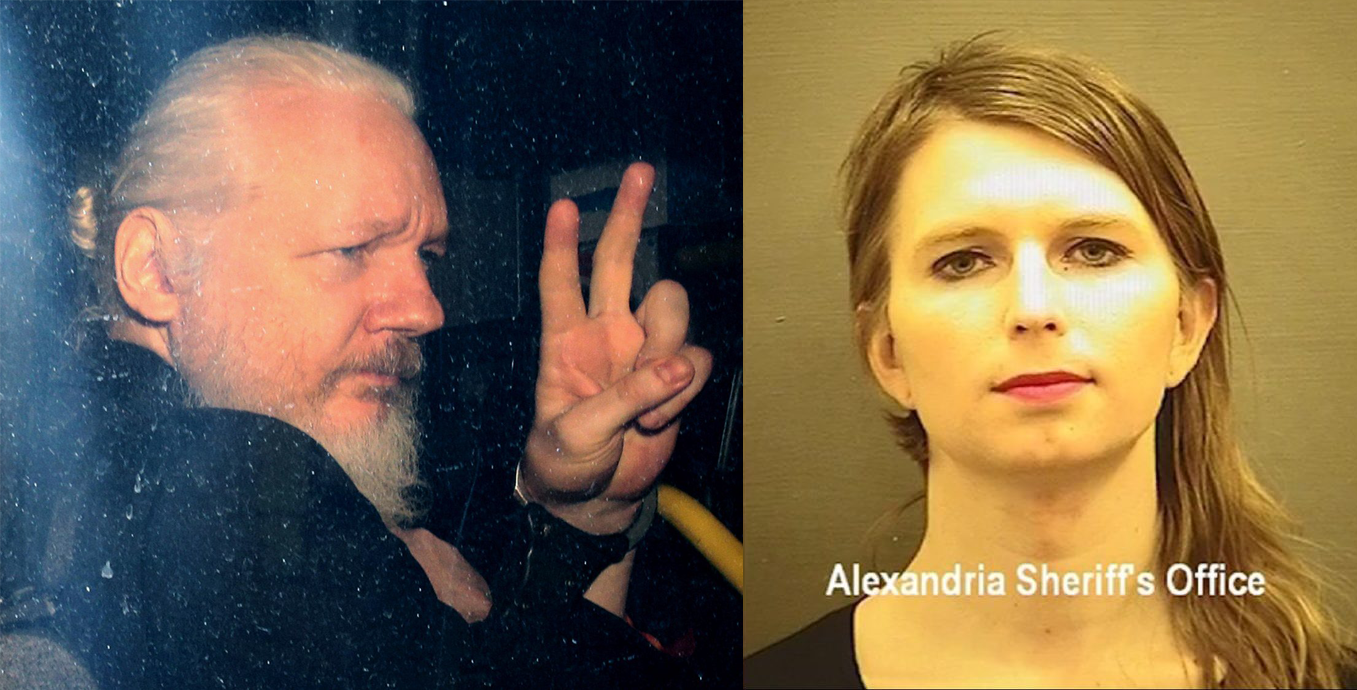


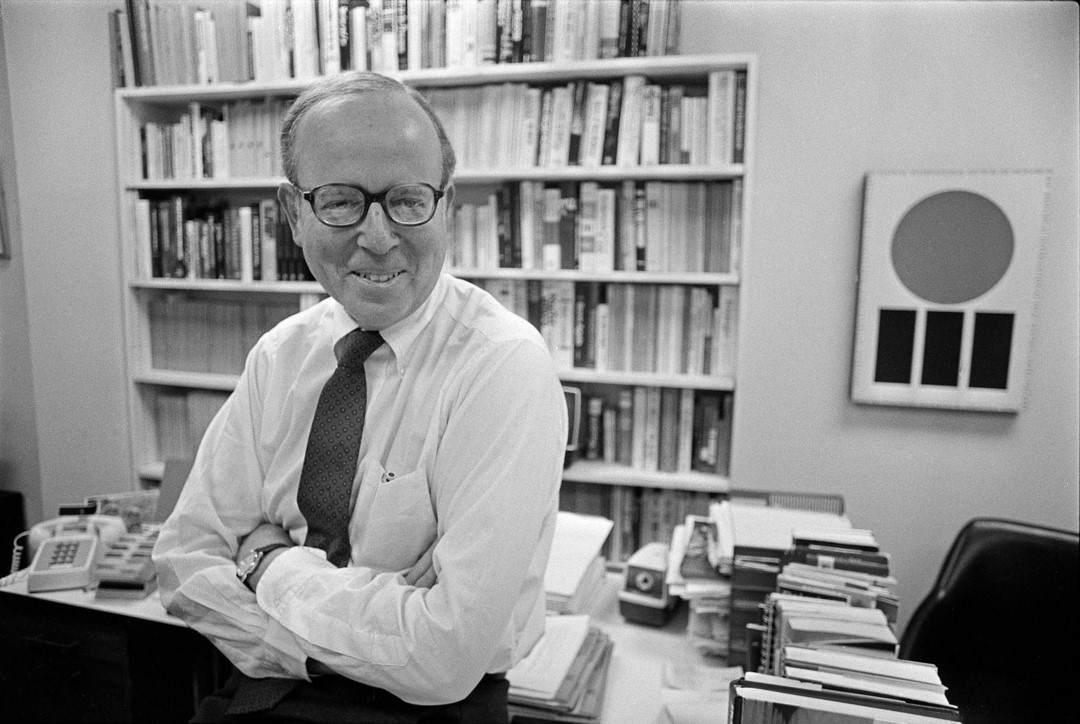



I remember this story in Spy magazine. That’ how I followed it at that time. Sadly we know nothing will become of this. Sad